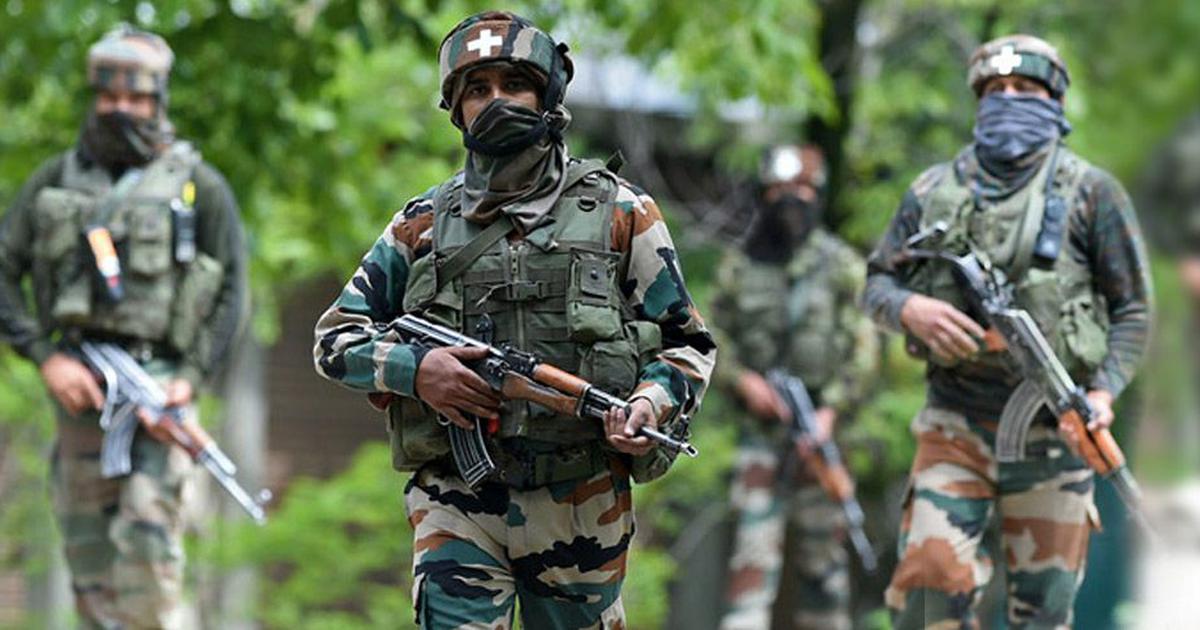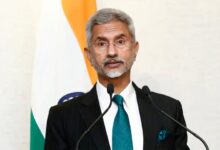ITBP on LAC — Accepting China’s New Normal?

- The answer is in the news story that revealed this stupid concept. It was suggested that establishing the ITBP on the LAC would lessen the likelihood of armed conflict.
- The violating Joint Communique exhibited MEA's typical fearful and timid attitude toward China, as well as matched bargaining skills! The Chinese embassy cheerfully reminds the Indian media of this document.
The release of a pink paper on August 15th, much to the chagrin of many, revealed that the Narendra Modi government is considering handing over management of the 3,488-kilometer-long disputed border with China to the paramilitary Indo-Tibetan Border Police.
The main reasons given for such a handover appear to be “avoiding border disputes” and, if belatedly, realising the “one border, once force” concept agreed by the previous Bharatiya Janata Party rule in 2004.
China’s deep incursion into and occupation of significant Indian land – in excess of 1,000 square kilometres in the area northeast of the Y-junction abutting on the Xinjiang Highway — has not only gone unnoticed in New Delhi, but is something Defence Minister Rajnath Singh studiously ignores.
He uses every opportunity, for example, to promote the myth that the People’s Liberation Army has not annexed a single inch of Indian territory. According to the news article, ITBP has 180 border outposts with 140 troops stationed in each, for a total of 25,200 deployed on the LAC. Furthermore, an additional 47 ITBP border outposts were sanctioned two years ago — 34 in Arunachal Pradesh and the rest in Ladakh.
This kite-flying by Home Ministry bureaucrats is because they see it as an excellent opportunity to seize control of the LAC from the Indian army and Defence Ministry and expand their territory. After all, their minister, Amit Shah, is the country’s second most powerful man and the Prime Minister’s sole political confidante.
What he can be induced to want officially is pushable as long as a compelling case can be presented to Modi, who will need convincing. Modi is likely to be concerned. His last two national defence programmes have not been as successful as he had hoped.
Internal resistance has all but stalled the process of integrating the military services, and the Agnipath-Agniveer programme has drawn political criticism and sparked nationwide protests in the unemployables-rich BIMARU (Bihar-Madhya Pradesh-Rajasthan-Uttar Pradesh) belt, which is also electorally significant. And the general elections in 2024 are only two years away.
Manvendra Singh, the late Jaswant Singh’s son, who left the ruling BJP for Sonia-Rahul Gandhi’s Congress to improve his political prospects — talk of scampering onto a sinking ship — correctly contended that the Home Ministry’s taking charge of the live China border will result in duplication of costs and procurement systems, weakening logistics and force management on the LAC and, by implication, needlessly complicating an already difficult problem of maintaining credibility.
The intention underlying such a choice, though, is more concerning. Could it be a prelude to Modi striking a deal with Chinese President Xi Jinping in which the precondition — “restoration of the status quo ante,” i.e., the return of all land occupied/absorbed by the PLA in exchange for normalcy in bilateral relations — is dropped, China gets to keep what it has annexed, and India, well, lumps it?
In other words, Delhi accepts the Chinese terms and the new territorial standard, including the LAC drawn broadly on the Chinese 1959 claimline enforced by Beijing in Ladakh, the Dok La trijunction area, and elsewhere?As per Chinese desire, such a “compromise” will also need the Indian government reiterating the “One China” policy.
What’s the basis for the above conclusion?
For one thing, the Ministry of External Affairs/Government of India has never placed the Tibet and Taiwan issues on the same political level as Kashmir, which Beijing has never recognised as a part of India. As far as Beijing is concerned, there are two claimants to the erstwhile Princely Kingdom of Jammu & Kashmir, and the portion consisting of Gilgit, Hunza, Baltistan, and the other principalities (Chitral, Nagar, and so on) falling within the ambit of “Northern Areas” and illegally in Pakistan’s possession is Pakistan’s, with Pakistan also having a legitimate claim on Indian J&K.
Right up until the 2020 Galwan River clashes, the Xi regime kept jabbing India in the back by launching the China-Pakistan Economic Corridor (CPEC), for example, without ever mentioning the 1963 Ayub Khan-Zhouenlai accord, which specifically mentioned the indeterminate status of J&K pending a final settlement between India and Pakistan.
This, at the very least, required Beijing to obtain Delhi’s approval for CPEC as it travelled through Indian-claimed Kashmir region. However, no such official approval was obtained from Delhi, and China proceeded to treat the Northern Areas as vital to Pakistan, through which it could build the CPEC route via the Karakorum Pass to Gwadar and other projects.
In the meantime, India has continued to respect Chinese sensibilities and has unequivocally supported the principle of “One China.” Taiwan opened an embassy in Delhi disguised as a “Trade mission” and sought diplomatic recognition, albeit obliquely.
(In fact, it was rumoured during Chandrashekhar’s brief reign as Prime Minister, Nov 1990-June 1991, when the country’s economy was in shambles and the country’s gold reserves had to be airlifted to the vaults of the Bank of England in London as collateral for loans, thatthat Taipei would cheerfully pay India’s then-external national debt of $8-$10 billion in exchange for permission to fly the Taiwanese flag on its mission, which offer was denied!).
In any case, on his state visit in 2003, Prime Minister Atal Bihari Vajpayee set a policy path that internalised Chinese terms, losing India the little clout it had left by accepting Tibet as part of China (in exchange for Beijing accepting Sikkim as a state in the Indian Union)! The violating Joint Communique exhibited MEA’s typical fearful and timid attitude toward China, as well as matched bargaining skills! The Chinese embassy cheerfully reminds the Indian media of this document.
The MEA only recently stopped talking about “One China,” and then did not come out swinging by equating “One China” with “One India,” inclusive of all of Pakistan-occupied Kashmir — a strategy I advocated in my 2015 book Why India is Not a Great Power (Yet).
Worse, the Indian administration has danced about the question of Taiwan and India’s developing economic, trade, technological, and military connections with Taipei without recognising Taiwan as a separate and distinct nation whose sovereignty Beijing must respect.
So, how does this all fit into the Home Ministry’s ITBP-LAC gambit? Unfortunately, the ITBP (like the other paramilitary group — Border Security Force) is described as “ensuring the security of India’s frontiers and for matters connected therewith” under the loosely worded Indo-Tibetan Border Police Act, 1992, enacted in 1996. In effect, it raises these paramils to the level of the army, at least theoretically.
It could bolster the Home Ministry’s legal grounds for putting the ITBP in danger on the frontlines of the LAC.However, because this paramil is not as well equipped or organised for warfighting as the army is, and has the necessary combat mentality, the ITBP troops will be an impediment and hindrance to the army, which, although being crippled in other ways, will have to take care of business. So, since the ITBP is clearly incapable of fighting Chinese group forces, how does positioning it in the van help?
The answer is in the news story that revealed this stupid concept. It was suggested that establishing the ITBP on the LAC would lessen the likelihood of armed conflict. In most countries, paramilitaries are tasked with policing/monitoring established, well marked, and internationally recognised borders.
The border with China is not defined, therefore area on either side of the disputed LAC is up for grabs. Except that whenever the opportunity presents itself, the Chinese People’s Liberation Army seizes Indian territory; on the other hand, the Indian army does not reciprocate by seizing chunks of land on the Chinese side.
In the event, Beijing’s standing orders to the PLA appear to be to stake claims on Indian territory patrolled by Indian soldiers, occupy any land devoid of an Indian military presence, and exploit the Indian army’s disposition policy by capturing areas/posts from which Indians are withdrawn due to winter and the lack of a network of border roads, communications setups, storage depots, and other support infrastructure, in order to maintain a forward presence in strife-torn Kashmir.
In high winter, Pakistan army elements took the stations evacuated by Indian troops on the Kargil heights, precipitating a short battle in 1999. And it led to the PLA annexing strategically crucial land around the Y-junction on the Depsang Plains, as well as on the Galwan and elsewhere, and confronting the shocked Indian army with a fait accompli.
It’s the kind of geographical expansion that the Indian army normally makes no attempt to stop. Now that the PLA has established itself in these once Indian areas, Beijing is looking forward to seizing more territory rather than restoring previous conditions, as Jaishankar has argued.If the Modi government wants to avoid military conflict in these circumstances, who would they rather have on the LAC facing the Chinese — the Indian army, which is capable of pushing back when pushed, or the paramilitary ITBP, which is led by people from the Indian Police Service and has little real capability?
Following the 1962 war, the ITBP was formed as a Special Forces organisation, trained by US Rangers for enemy rear area operations and staffed primarily by Tibetan youngsters from the exile community who were driven to cause maximum harm to the PLA lording it over their homeland.
Over time, the Tibetan strength in this paramil eroded, and the ITBP devolved into just another Home Ministry-controlled police organisation, recruiting from all over and performing roles it had no business performing. Such as “civic assistance,” battling Naxals in the Red Corridor, or performing more mundane tasks such as airport security, etc.
But this is what the IPS leadership of the ITBP is most comfortable doing, and it explains why some in the Modi government, who do not want armed clashes with China, would prefer an inoffensive police-type outfit out there on the LAC!
In any event, the assertions made by its current Director-General, Sanjay Arora, a police officer from the Tamil Nadu cadre, show how disconnected the IPS officers managing ITBP are from field realities.
He is quoted in the press as saying, “Our preparation on LAC is amazing” and that the ITBP is “ready for any scenario,” and he adds, “China is a country like us”!! It’s difficult to know what to make of Mr. Arora other than that he’s prone to exaggeration and is entirely unaware of the threat his unit may face. He retires in 2025 and should hope that the PLA does not put the ITBP to the test before then!







Facebook Comments